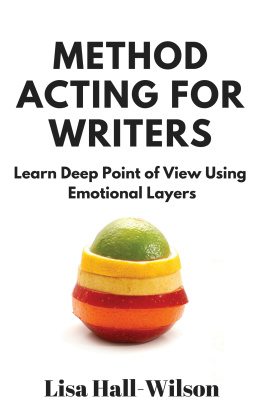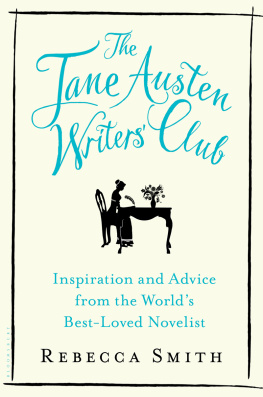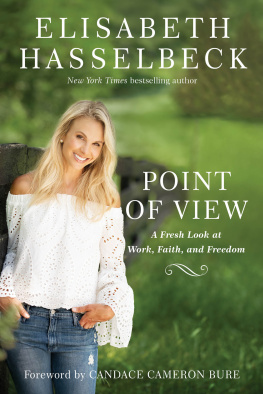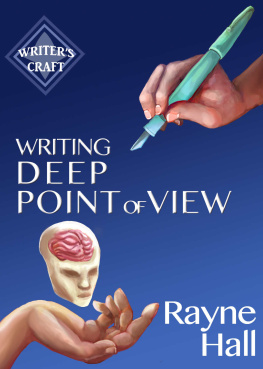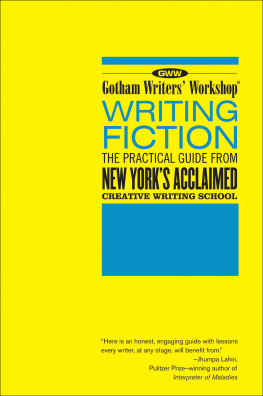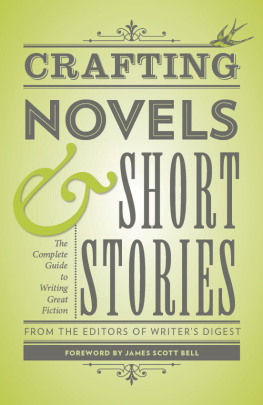Contents
Guide
Page List
WHO SAYS?
MASTERING POINT OF VIEW IN FICTION
LISA ZEIDNER

FOR JOHN
CONTENTS
WHO SAYS?
T here is always a mnage a trois when youre reading: you, the author, and the character.
At least a threesome, though in sprawling epics the trio can morph into an immense, tribal, polygamous family.
Youre in Paris, or Pittsburgh, in bed, or at a caf, holding the book (or your device) in your hand, your lips moving, or not, as your eyes scan the page. Even if you belong to a book club, you read alone. And unless he is James Patterson with a Santas workshop full of ghostwriting elves churning out thrillers for his insatiable fans, the author is alone, too, when he creates the characters.
Who, basically, dont exist, except insofar as the author Frankensteins them into lurching life. Even if the character is a thinly veiled stand-in for the author himselfa neurotic but endearing nerd with a disastrous dating life, or a veteran adjusting to civilian life after the war that took his legsthe character is by default a chiasma.
But let us agree that the job of the fiction writer is to make us feel something for his imaginary friend, or for the evil twin whispering in his ear that he must do awful things. We can feel sympathy for the character, solicitude, grief for his loss, fervent hope for his success, or even morbid fascination, if the dude happens to be a serial killer.
If youre a Venn diagram type, think of three nice round bubbles, each floating separately and safely in its own enclosed world, labeled Reader, Author, Characterand then think about how much the bubbles will overlap. Its in that bleeding or overlap between the entitieschoose your metaphor, or your ink colorthat empathy lives.
Sometimes the author and the reader form their own band of brothers, watching the character coolly from afar, giggling or gaping at him, judging his foibles, watching him fumble. Sometimes the author shows you the world so completely from the characters perspective that you pretty much forget the author is even there. It seems that you and the character are alone together at the empty diner after closing time, bathed in spotlights as in a Hopper painting. Of course you know that is not really the case, because no matter how much you are encouraged to suspend your disbelief, you are aware that a writer has constructed the tale. But your identification with the character is so complete that all three of youauthor, character, readermight as well be participating in a synchronized swimming routine, or perhaps you crawled directly into the heros head through the strange little portal on Floor 7 in Being John Malkovich.
Lets say the subject is a nasty divorce. The author can pick a sidesay, that of the beleaguered, betrayed wife (Nora Ephrons Heartburn). If the major characters are the two warring spouses, the author can serve as a kind of mediator, giving equal time to both spouses versions of the story and inviting you to be impartial, or to witness the nuptial carnage in head-shaking wonderment. The author might choose a supposedly reliable arbiter to ensure fairness, the role taken by the divorce lawyer in Warren Adlers The War of the Roses. Or the author might choose to let the poor kid the couple is fighting over own the storyto show the divorce through her perspective, even though shes too young to understand whats going on (Henry Jamess What Maisie Knew). The choice of point of view, in talking about divorce, basically is the story, and if the fiction is successful, it will be neither a court docket full of facts nor an unfiltered screed of lament against the cheating spouse.
If the cast of the novel is large, your author can function as a kind of cheerful party planner, escorting you around to introduce you to the people she thinks you might find interesting, filling you with admiration for the breadth of her vision. She might provide you with a genealogy, so you can keep the characters straight. She might provide you with a historical timeline. Hilary Mantel gives you both a cast of characters and a chart about the evolution of the Tudors at the beginning of Wolf Hall. You admire Mantel for doing her homework. Still, youre aware that no matter how assiduous the research, she doesnt really know what Cromwell had for breakfast.
The author is an intermediary. He is a guide and translatorand that is true even (or, as well later see, especially) when the story is being told in first person, or involves facts or historical events.
Point-of-view choices involve skillful manipulations in, and modulations of, your alliance with your characters. In fact, I will argue in this book that those manipulations are the very heart of fiction, more central and crucial than plotthat only fiction that challenges your allegiances to author or character ever fully succeeds. And while most of us, when we write, make choices about point of view automatically and instinctively, we can learn a great deal about both our goals and the best ways to achieve them by breaking down those choices, and looking carefully at our options.
We can hate or mistrust a character. A narrator can be anywhere from subtly to riotously unreliable. But we cannot hate or mistrust the author. If we hate the author, we hate the book. When the author ushers us to our seats, we trust him to not position us behind a huge concrete pole, where our view of the action is obscured. We dont want to watch a rehearsal, either. We want the players to know their lines and be in costume. There is a huge amount of trust implicit in the contract between author and reader. We do not want to be promised insight into the human heart and instead be given snuff porn. We do not want to be promised a story that is, to use the adjective of the moment, edgy, and instead wind up in a Hallmark card.
You can think of point-of-view choices as stopping points along a spectrum or sliding scale:
ClosenessDistance
EmpathyJudgment
InternalExternal
SubjectivityObjectivity
Deciding about point of view requires an assessment about whether youre moving toward your subject, or whether youre moving away. Whether youre going to encourage the reader to bathe in the characters view of the world, or offer a complementary or even competing one.
Here is why things get tricky. Of course a surefire way to school us in characters feelings is to allow us to gain access to their minds and soulsthat is, after all, why we bother to read fiction rather than the newspaper. As Atticus Finch asserts in To Kill a Mockingbird, You never really understand a person until you consider things from his point of view... until you climb inside of his skin and walk around in it. Much of this book is devoted to methods for achieving that identification with character. But the best route to empathy is not always immersion and closeness. Paradoxically, on some issues, if you get too close, it can be more off-putting than immersive. Sometimes you need to pull back for a wider view to really feel the desired impact. Not all distant, objective observations are necessarily cold and clinical, either. Sometimes they, too, can engender strong reactions.
To talk in cinematic terms for a minute, if youre filming a romantic kiss, you dont want to get so close to the smooching duo that you see the hair in their nostrils. You might build the mood better if you show the lights twinkling in the harbor behind them. But if you do the equivalent of one of those wildly circling crane shots with a suddenly swelling violin score, your audience may be snorting with derision about the clich rather than sighing with gauzy, romantic satisfaction. Its particularly difficult to get the point of view right with a sex scene, because such scenes almost by default turn the reader into a voyeureven though the act in question is (at least most of the time) private, and titillation might not be the desired effect. Its also a situation where a writer can seem to be gloating about his own prowess. I use his here advisedly: see Norman Mailer or other writers of a certain swagger who are sometimes accused of uncomfortably celebrating their own irresistibility and talent for pleasing the ladies, rather than their protagonists. Back to our Venn diagrams: the reader then objects that there isnt



